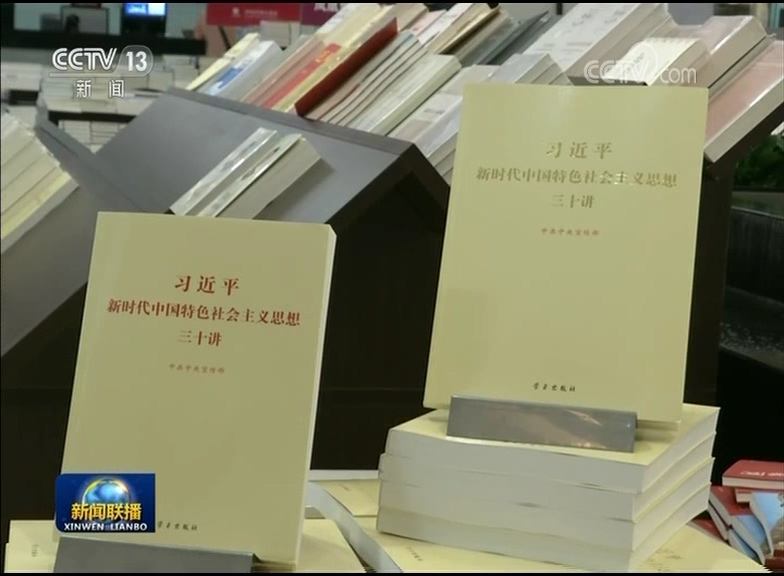2020/12/16 11:16 LIFESTYLE
New Homes, New Lives Rise From the Ruins
It's common in China that newly married couples want to move into a new house. But for victim Bu Zhena, the apartment in Beichuan Qiang autonomous county in was more than a house. It represented a new life.
Bu, a divorced mother, lost her only son in the magnitude-8 earthquake that struck Beichuan on May 12, 2008. The quake claimed the lives of 69,227 people and injured 374,643 others.
"The moment I learned of the death of my boy, I felt another earthquake in my heart," the 45-year-old says.
As her life was falling apart, Bu received comfort and strength from Zhao Qin, her current husband. Zhao lost his wife in the earthquake, but their 3-year-old daughter survived. Bu, Zhao and the girl formed a new family in 2009.
Less than two years later, they were offered a residence in newly built apartments in the new Beichuan county seat, together with 7,396 other households. The area had been rehabilitated after the earthquake.
"It's very lucky that I could start a family again," Bu says. "I never thought I would hit the jackpot and have my own house in such a well-designed town. I now have a family and a home."
Beichuan Qiang autonomous county was the worst-hit area of the ferocious Wenchun earthquake. About 20,000 residents were killed or left missing, around one-fourth of the overall catastrophic death toll.
Ten years later, 38 counties and districts in Sichuan that were damaged or demolished have been reconstructed. New schools, hospitals, apartment buildings and parks have risen from the ruins. Places once devastated, such as Beichuan and Wenchuan, have a new look.
When President Xi Jinping visited Yingxiu township, the epicenter of the earthquake, in February, he spoke highly of the achievements made during post-disaster restoration and reconstruction. It demonstrates the strong leadership of the Communist Party of China and the superiority of the socialist system, he said.
He called for continuous efforts to promote industrial development, improve people's livelihoods and build a better community for local people.
Covering an area of about 5 square kilometers and home to 35,000 people, the new Beichuan was built from scratch about 23 kilometers southeast of the old county seat, which was severely damaged during the quake.
The old Beichuan, one of the largest areas of earthquake remains in the world, is being preserved as a site for scientists to study the impact of quakes on different kinds of buildings.
Zhang Gang, chief planner of urban-rural construction in Beichuan, says the old Beichuan county seat was built on ground with a high risk of geological disaster.
"Confined by surrounding mountains, the original site is unsuitable and impractical for reconstruction," he says. "That led to the construction of a brand-new county seat elsewhere."
Zhang says the new buildings will be able to hold up in various disaster conditions, with quake resistance higher than average.
Earthquake experts use a special metric to express a building's level of resistance. Normal buildings in Beichuan, such as residential apartments, have been built to withstand seismic intensity of 7 degrees, while key structures such as schools and hospitals can withstand 8 degrees of intensity. Experts say this is a high level of safety. The degrees do not equate to earthquake magnitude because there are many variables, such as distance, type of ground, depth of epicenter and other factors, but a rough rule of thumb is that a magnitude-8 earthquake would deliver a shock level of 12 degrees at the epicenter.
Big scale, fast speed
The new Beichuan county project went quickly, starting on May 25, 2009, with support from Shandong province. It was completed in only 15 months, on Sept 25, 2010.
"We're proud of the speed and scale of our reconstruction, which is an extraordinary achievement by any standard and should make China proud," Zhang says."Only a big, strong country with a powerful government can achieve this."
Wang Shoulei, director of Beichuan county's publicity department, says the newly restored area is a hot tourism attraction for visitors, both to see the new lives of earthquake survivors and the region's unique ethnic culture.
In China's only - a sort of living museum - tourists can enjoy the signature commercial pedestrian street, which was built with Qiang architectural features. Customs are also preserved and celebrated.
Banaqia district, the landmark project of the new county, is now a busy shopping street consisting of cafes, restaurants and shops with local specialties and Qiang ethnic crafts demonstrated by locals. "Banaqia" means market in the Qiang language.
Large-scale shows are staged in the public area, including a dragon dance and Qiang ethnic songs and other performances. Visitors can join locals for a Qiang-style campfire and outdoor dinner, and take home some of Beichuan's famous smoked food, including pork, sausage and wild animal meat.
In 2017, the number of domestic tourists reached 6.35 million, with total tourism revenue of 5.1 billion yuan ($801 million; 678 million euros; 锟
Explore further
| China set for consumption reb | China's major airport constru |
| China sees surge in medical d | |







